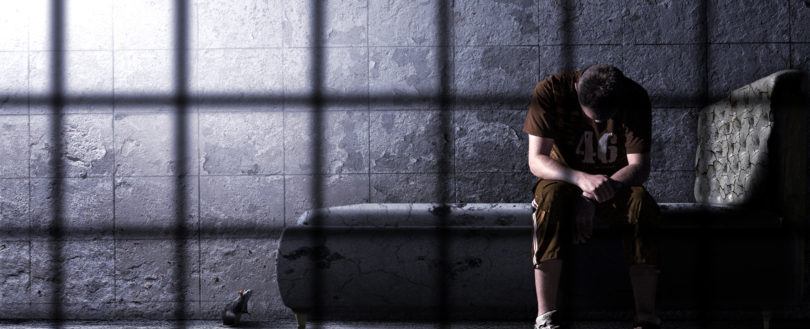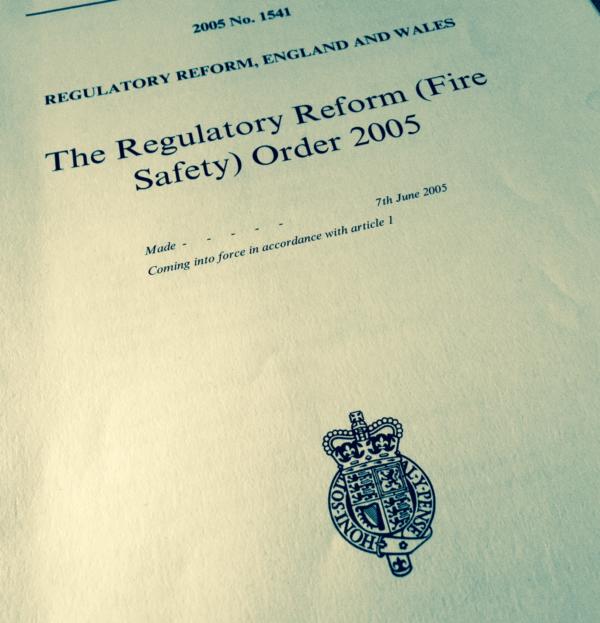- Homepage
- News
- Blogs & Articles
- Why do we need fire risk assessments?

Why do we need fire risk assessments?
Like it? Share it!
18 November 2016 by Will Lloyd, Technical Manager
What is a fire risk assessment? And what is a risk assessment for? Why do you even need this bit of paper anyway?
Let's get this straight: a fire risk assessment is designed to minimise the probability of the event of a fire by identifying the potential hazards and fire risks within a building. However, it doesn’t just examine the structure of the building itself, but the contents of the building, the layout, and the use of the building. How does the use of the building affect the fire risk? How many people are in the building? How will they escape? What steps should be taken to minimise the dangers?
For any business or public building such as shops, nightclubs, cafes, restaurants, offices, churches, and even bus and train stations, a fire risk assessment is required. This list of buildings is not exhaustive, of course, but as a rule, all non-domestic properties need to have a fire risk assessment in place. This is not an optional document and is mandatory by UK law.

But why are fire risk assessments needed?
The reason is that a fire risk assessment is required is because it is stipulated in the Regulatory Reform (Fire Safety) Order 2005 (this applies to England and Wales). In Scotland, the same applies due to legislation called The Fire (Scotland) Act 2005, in combination with the Fire Safety (Scotland) Regulations 2006. Of course it shouldn't come as a surprise that Northern Ireland has also made fire risk assessments mandatory by law, too (the Fire and Rescue Services (Northern Ireland) Order 2006, and the Fire Safety Regulations (Northern Ireland) 2010 respectively).
For the sake of simplicity we will discuss the legislation in reference to the Regulatory Reform (Fire Safety) Order 2005, which applies in England and Wales, but it is vital to note that the legislation for Scotland and Northern Ireland have broadly similar legislation that sets out the same principles as England and Wales. Either way, wherever you're from, you should remember one simple thing: there is no escaping fire risk assessments as they are mandatory by law.
The Regulatory Reform Fire Safety Order 2005 was designed to replace all previous pieces of legislation regarding fire safety, streamlining the requirements within England and Wales. It is recommended that employers and other responsible persons such as housing associations, schools, hospitals, and landlords familiarise themselves with the legislation so that they understand the requirements.
Simply put, the legislation states that a fire risk assessment must be carried out, but it also lists a whole range of other requirements such as: who can do a fire risk assessment, who is responsible in the event of a fire, procedures for serious and imminent danger and for danger areas, what provision of information should be given to employees, as well as how the Order is enforced. It is important to understand that failure to comply with the Regulatory Reform (Fire Safety) Order 2005 could result in prosecution resulting in fines that could be tens of thousands of pounds, depending on the number of breaches. In some cases, guilty parties end up with a prison sentence.
What does the legislation say in regards to fire risk assessments? This is especially important to note:
‘9.—(1) The responsible person must make a suitable and sufficient assessment of the risks to which relevant persons are exposed for the purpose of identifying the general fire precautions he needs to take to comply with the requirements and prohibitions imposed on him by or under this Order.
(2) Where a dangerous substance is or is liable to be present in or on the premises, the risk assessment must include consideration of the matters set out in Part 1 of Schedule 1.
(3) Any such assessment must be reviewed by the responsible person regularly so as to keep it up to date and particularly if—
(a)there is reason to suspect that it is no longer valid; or
(b)there has been a significant change in the matters to which it relates including when the premises, special, technical and organisational measures, or organisation of the work undergo significant changes, extensions, or conversions,
and where changes to an assessment are required as a result of any such review, the responsible person must make them.
(4) The responsible person must not employ a young person unless he has, in relation to risks to young persons, made or reviewed an assessment in accordance with paragraphs (1) and (5).
(5) In making or reviewing the assessment, the responsible person who employs or is to employ a young person must take particular account of the matters set out in Part 2 of Schedule 1.
(6) As soon as practicable after the assessment is made or reviewed, the responsible person must record the information prescribed by paragraph (7) where—
(a)he employs five or more employees;
(b)a licence under an enactment is in force in relation to the premises; or
(c)an alterations notice requiring this is in force in relation to the premises.
(7) The prescribed information is—
(a)the significant findings of the assessment, including the measures which have been or will be taken by the responsible person pursuant to this Order; and
(b)any group of persons identified by the assessment as being especially at risk.
(8) No new work activity involving a dangerous substance may commence unless—
(a)the risk assessment has been made; and
(b)the measures required by or under this Order have been implemented.’
It is important to note that the legislation calls for the risk assessment to be both ‘suitable’ and ‘sufficient’. The problem with this is that it seems that there is a level of interpretation here: what might be suitable for one property certainly won’t be suitable for another. This is why it is important to tailor the fire risk assessment to each specific premises, and to update and review the assessment as and when any changes occur, such as when a room is repurposed, the people in the building change (particularly if they are children or disabled or have any other impairment), or the usage of the building changes (for example if a shop converts to being open 24hrs or the building is converted in some manner).
Anyone can conduct a fire risk assessment, so long as they are deemed ‘competent’, but a recent investigation uncovered that many business owners lack the skills or knowledge in order to complete a risk assessment unaided. The problem arises when the person carrying out the fire risk assessment does not have the years of experience and ability to fully analyse the risks – what if risks or hazards are missed?
Not only is this potentially very dangerous, this could lead to an actual fire occurring in the building because the risks have not been properly assessed and minimised. This could not only be devastating for the lives of the people inside, but also completely devastating for the business, school, or hospital (for example). Lives could be lost as well as vital services to the local community or business world.
This is why it is absolutely imperative to get a fire risk assessment right straight from the beginning. It is far too easy to overlook hazards and risks, or fail to understand the impact of those risks and make insufficient recommendations to reduce those risks. A recent investigation carried out during a review of the Fire of Scotland Act discovered that there was a huge lack of understanding of what is required in a fire risk assessment:
‘Scottish Fire and Rescue Service statistics… highlight that from a sample of 457 premises, 130 premises did not have a risk assessment carried out and from the 315 premiese that did have a risk assessment carried out, the fire safety measures in place were considered to be totally adequate in only one premises.’
In this instance it is therefore the Fire Industry Association’s recommendation that in the instance of a ‘responsible person’ or ‘duty holder’ (as named by legislation) being unable to have the requisite skills, knowledge, experience, and competence to produce a suitable and sufficient fire risk assessment, that an independent fire risk assessor should be appointed.
But how do you find a reliable risk assessor? The answer is simple: use only verified and certified risk assessors.
Fire risk assessments are easy to do, but hard to do well. Almost anyone with a background in the fire industry can set themselves up as a ‘professional’ fire risk assessor and visit premises around the country giving out advice to building owners and businesses. But that is the scary part – there are hundreds of companies claiming to be ‘expert’ risk assessors, but without any real grounds or certification to say that they are.
The good news is that the number of certified (i.e. independently verified to be reliable and fully trained) risk assessment companies has risen from zero in 2012, to 44 companies in the UK now. Whilst 44 may not sound like a particularly high number, the figure is likely to snowball over the next few years as a more educated public demand verification of the skills of the people they are hiring to carry out fire risk assessments.
This trend for certified fire risk assessors is a trend that is following the footsteps of the installation market: more and more installers of fire alarm systems across the UK are now certified (over 800 companies, in fact), so this is a trend that is likely to continue in the industry for risk assessment companies too.
As it is a legal requirement to carry out a fire risk assessment in any business or public building, it is important to use a company that has been verified by a third party to have the correct skills and training.
The easiest way to check? Use the Fire Industry Association (FIA) members’ register, right here on our website. All members listed under the ‘Find a Member’ section are verified and certified by an independent body, meaning that you can trust their risk assessment skills.
-

Will Lloyd
Technical Manager
Related posts
-
Ensuring fire safety in schools: responsibilities, developments, and training
06 October 2023
By Neil Budd, FIA Technical manager
-
On this day, forgotten disasters: Summerland disaster
02 August 2023
By Kirsty Lavell, Marketing Manager
-
Fireside Chat with Hanif Ghodawala, Business Development Manager for Advanced Emergency Lighting Division
01 August 2023
By Kirsty Lavell, Marketing Manager
Related news
-
Business Owner Fined for Breaching Fire Safety Legislation
06 October 2025
-
Addressing Fire Safety Risks in Social Housing
11 February 2025
